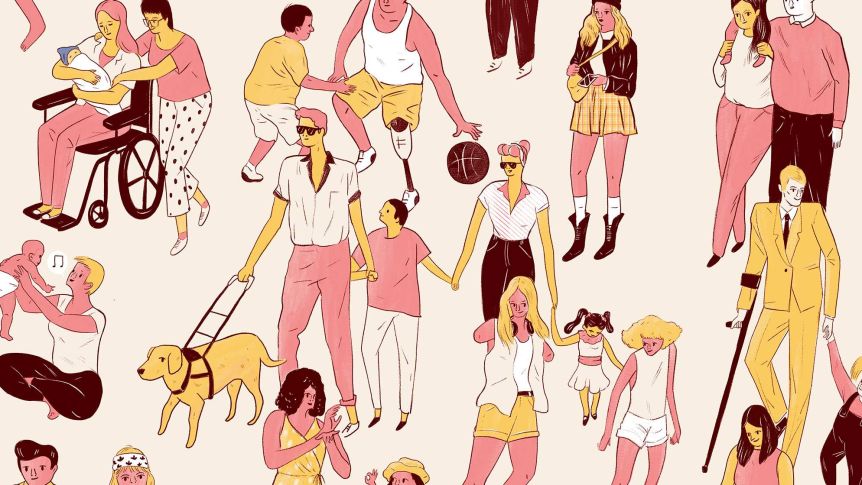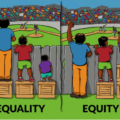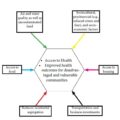People with disabilities are among the most marginalized groups in the world. People with disabilities have poorer health outcomes, lower education achievements, less economic participation and higher rates of poverty than people without disabilities. Disability is now understood to be a human rights issue. People are disabled by society, not just by their bodies. These barriers can be overcome, if governments, nongovernmental organizations, professionals and people with disabilities and their families work together. SEE: Equity Vs Equality
Definitions
Access and Equity are two key concepts within a broad social justice framework, which aims toward the development of a socially just society.
Access implies fair and equitable access to services in areas essential to achieving and maintaining social, cultural and economic well-being.
Equity implies distribution of economic, social and political resources in ways that are not restricted by age, gender, race, ethnicity, ability, sexual orientation or income.
Therefore, Access and Equity is concerned with the removal of barriers in the design and delivery of programs and services and endeavouring to ensure that all community members have the opportunities to enhance their overall social, cultural and economic well-being.
Access and equity are concepts against which all services should be measured. They will be reflected in how decisions are made about who is eligible for a service, how resources are allocated, how the needs of people from diverse backgrounds are met. Access and equity are covered in the Disability Discrimination Act and legislation’s.
Barriers to access are often encountered in the following areas:
- Transport – e.g. no lifts at train station, limited availability of modified taxis
- Building design – e.g. no ramps and rails at entrance and exit, doors too narrow, bathrooms not modified
- Use of services – e.g. reception counters too high, information not available in a range of languages
- Communication – e.g. staff not trained in using alternative communication systems
- Culture – e.g. not meeting religious or cultural dietary requirements
- Equipment – e.g. service not meeting equipment needs such as lifting devices
- Staff and community attitudes – e.g. refusing a service based on a person’s appearance or medical status.
Key Principles
The following Key Principles forms the basis of decision-making.
Access and Equity as a Policy seeks to ensure that all members of the community who face barriers of language, race, culture, religion, income, gender, sexual orientation and disability have a right and opportunity to:
- be recognised as valuable citizens;
- have equitable access to all aspects of services and programs;
- contribute to the economic, social, political and cultural life of the community; and
- have their needs recognised and participate in the planning and administration of relevant policies, programs and services.
Social protection from a rights-based approach must accommodate the needs of persons with disabilities. Traditional disability-related social welfare schemes have mainly focused on poverty rather than taking into account specific challenges faced by persons with disabilities; particularly active participation in education, access to health and employment. Previous methods of addressing benefits for persons with disabilities have shown limited progress in overcoming the deeply-rooted social structures and practices that hinder opportunities for persons with disabilities. Consequently, social protection needs to move beyond traditional welfare approaches to intervention systems that promote active citizenship, social inclusion and community participation while avoiding paternalism and dependence.
The right of persons with disabilities to social protection is recognized by the 1948 Universal Declaration of Human Rights (UDHR), the 1966 International Covenant on Economic, Social and Cultural Rights (ICESCR) and, more specifically, the 2006 UN Convention on the Rights of Persons with Disabilities (CRPD). Article 28 of the CRPD in particular recognizes the right of persons with disabilities to an adequate standard of living and to social protection, ensuring the enjoyment of both rights without discrimination on the basis of ability. Therefore, States parties should take appropriate measures to ensure that they receive equal access to mainstream social protection programmes and services —including basic services, social security systems, poverty reduction programmes and housing programmes— but also specific programmes and services for disability-related needs and expenses.
Furthermore, the Social Protection Floors Recommendation (No. 202) recognizes the importance of national social protection floors to provide basic social security guarantees to all persons, including persons with disabilities, across the life cycle (with priority given to poverty, vulnerability, and social exclusion). Recently, as a result of the global financial and economic crisis, some high-income countries have begun contracting out their social security systems. These measures, taken by the State, have a compound effect and disproportionately impact persons with disabilities. In contrast, many middle and low-income countries have begun strengthening their social protection systems and adopting a number of programmes and counter cyclical measures to reduce poverty, exclusion and inequality especially among vulnerable populations.






